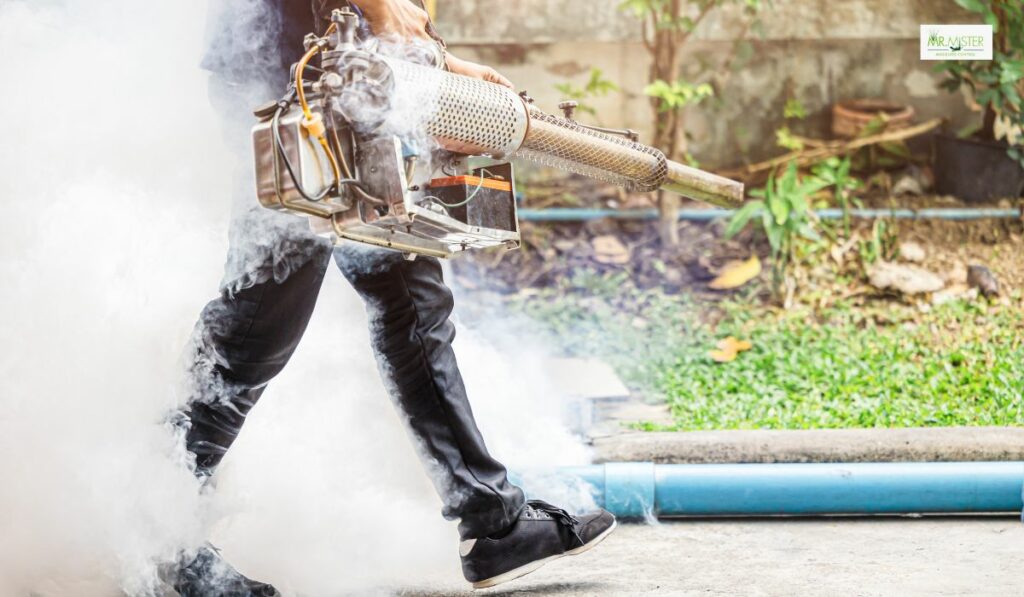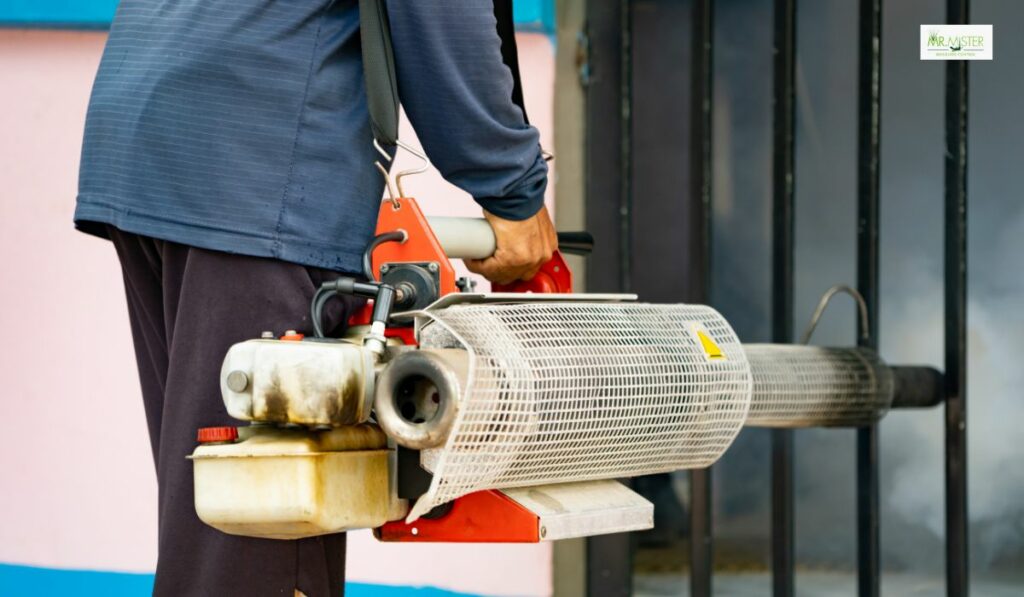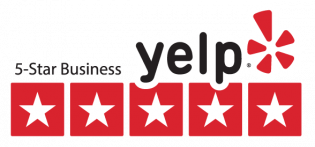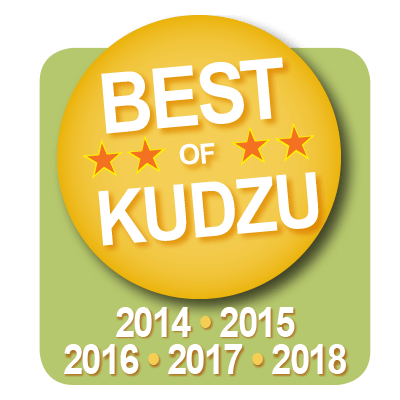What to Do After Pest Control Services and Treatments
Pest infestations can be a source of stress and discomfort, prompting many to seek professional pest control services.
However, the journey to a pest-free home continues after the completion of treatments.
In fact, what you do after pest control services and treatments plays a crucial role in ensuring a pest-free environment for the long term.
Let’s delve into a comprehensive guide on the steps and measures to take post-pest control.
Brief Overview of Pest Control Services
Pest control services involve the application of various techniques and treatments to eliminate or control unwanted pests.
From common household pests like ants and cockroaches to more severe infestations of termites or rodents, these services aim to restore the comfort and safety of living spaces.
Importance of Post-Treatment Actions
While pest control services effectively address existing infestations, post-treatment actions are equally vital.
Neglecting proper post-treatment measures can lead to a resurgence of pests, rendering the initial efforts futile.
This article will guide you through the essential steps to maintain a pest-free environment after professional pest control services.
Immediate Post-Treatment Measures
Stay Out of Treated Areas
Explanation of Residual Effects
After pest control treatments, the applied substances may have residual effects.
It’s crucial to stay out of treated areas to avoid direct contact and potential health risks associated with these chemicals.
Potential Health Risks
Understanding the potential health risks helps residents take necessary precautions.
These risks can vary depending on the type of treatment used, emphasizing the importance of following professional advice.
Ventilation of Treated Spaces
Importance of Fresh Air Circulation
Ventilating treated spaces aids in dispersing residual substances and ensuring a healthy indoor environment.
Proper ventilation accelerates the dissipation of treatment odors and minimizes exposure.
Aeration Tips for Different Spaces
Different spaces require tailored ventilation strategies.
From opening windows to using fans, adopting suitable aeration methods enhances the effectiveness of post-treatment measures.
Dispose of Contaminated Items
Guidelines for Discarding Affected Belongings
Items directly exposed to pest-infested areas may be contaminated.
Proper disposal guidelines help prevent the spread of potential remnants and reduce the risk of reinfestation.
Eco-Friendly Disposal Options
Considering eco-friendly disposal options aligns with sustainable practices.
Recycling or repurposing items responsibly contributes to environmental conservation.
Monitoring and Inspection
Regular Inspection Schedule
Creating a Routine for Checks
Establishing a routine for regular inspections ensures timely detection of any signs of pest resurgence.
Consistent checks are integral to maintaining a pest-free environment.
Signs of Pest Resurgence
Knowing the signs of pest resurgence empowers homeowners to take swift action.
Early detection allows for prompt intervention before the infestation escalates.
Recording Observations
Importance of Keeping Pest Activity Records
Maintaining records of pest observations provides valuable insights into pest behavior patterns.
This data informs future preventive measures and facilitates better communication with pest control professionals.
Digital Tools for Tracking Observations
Utilizing digital tools simplifies the process of recording and tracking pest observations.
Mobile apps and software make it convenient to document and analyze trends over time.
Cleaning and Hygiene Practices
Deep Cleaning Post-Treatment
Eliminating Pest Remnants
Deep cleaning focuses on removing any remaining pest remnants or eggs that may linger after treatments.
Thorough cleaning contributes to the overall effectiveness of pest control measures.
Recommended Cleaning Agents
Selecting appropriate cleaning agents ensures the elimination of pest-related contaminants.
Non-toxic, eco-friendly options are preferred to maintain a safe and healthy living environment.
Maintaining Cleanliness
Long-Term Hygiene Practices
Sustaining cleanliness is a continuous effort.
Adopting long-term hygiene practices is essential for preventing conditions conducive to pest infestations.
Pest Prevention Through Cleanliness
A clean environment serves as a deterrent to pests.
Regular cleaning routines significantly reduce the likelihood of attracting and sustaining pest populations.
Seal and Secure Entry Points
Identifying Potential Entry Points
Common Areas of Vulnerability
Identifying common areas vulnerable to pest entry is the first step in effective pest-proofing.
Gaps, cracks, and openings are potential entry points that require attention.
Professional Inspection for Hidden Entryways
Engaging professionals for a thorough inspection helps uncover hidden entryways that may go unnoticed.
Their expertise ensures a comprehensive sealing strategy.
Implementing Sealing Measures
Sealants and Their Effectiveness
Choosing the right sealants enhances their effectiveness in sealing entry points.
Understanding the different types of sealants ensures optimal results in pest prevention.
DIY Sealing Techniques for Minor Gaps
Homeowners can undertake simple sealing measures for minor gaps.
DIY techniques, such as using weather stripping or caulk, are effective for small openings.
Landscaping Considerations
Yard Maintenance
Trimming Vegetation Around the Property
Overgrown vegetation provides hiding spots for pests.
Regular trimming and maintenance of yard greenery contribute to a less hospitable environment for pests.
Eliminating Standing Water Sources
Standing water attracts various pests, including mosquitoes.
Identifying and eliminating sources of standing water in the yard is crucial for pest control.
Pest-Resistant Plants
Choosing Vegetation that Deters Pests
Selecting plants with natural pest-repelling properties adds an extra layer of defense.
Certain plants act as deterrents, minimizing the likelihood of pest infestations.
Landscaping Techniques for Pest Control
Strategic landscaping techniques, such as creating natural barriers, can discourage pests from entering the property.
A well-designed landscape complements other pest control measures.
Pest-Proofing the Home
Storage Best Practices
Proper Food Storage
Effective food storage practices prevent attracting pests to the kitchen.
Sealed containers and proper storage areas discourage pests from accessing food sources.
Managing Clutter in Storage Areas
Clutter provides hiding places for pests. Organizing storage spaces and minimizing clutter reduces potential habitats for pests to thrive.
Pest-Resistant Furniture
Materials and Designs to Deter Pests
Selecting furniture with pest-resistant materials and designs minimizes the likelihood of infestations.
Certain materials, like metal or certain woods, are less appealing to pests.
Furniture Placement Strategies
Strategic furniture placement contributes to pest prevention.
Avoiding direct contact between furniture and walls minimizes hiding spots for pests.
Communication with Pest Control Professionals
Follow-Up Inspections
Scheduled Inspections by Professionals
Professional follow-up inspections are crucial for assessing the effectiveness of treatments.
Scheduled inspections provide an opportunity to address any emerging issues promptly.
Addressing Concerns Post-Treatment
Open communication with pest control professionals ensures that any concerns or questions are addressed post-treatment.
Timely communication fosters a collaborative approach to pest management.
Reporting Persistent Issues
Encouraging Open Communication
Encouraging residents to report any persistent issues is essential.
Open communication facilitates a proactive response, preventing potential re infestations.
Addressing Ongoing Challenges
Addressing ongoing challenges requires a collaborative effort between residents and pest control professionals.
Identifying the root causes of persistent issues ensures effective solutions.
Educating Residents
Understanding Pest Behavior
Basics of Common Pests
Knowledge of common pests and their behavior is empowering.
Understanding their habits aids in developing targeted prevention strategies.
Behavioral Insights for Effective Prevention
Insights into pest behavior provide a foundation for effective prevention.
Tailoring preventive measures based on behavioral patterns enhances their efficacy.
Sharing Prevention Tips
Community Awareness Programs
Community awareness programs educate residents on pest prevention.
Collaborative efforts within communities contribute to overall pest control success.
Collaborative Efforts for Pest Control
Engaging residents in collaborative efforts fosters a sense of community responsibility.
Shared knowledge and efforts result in a more resilient defense against pests.
Emergency Preparedness
Dealing with Unexpected Pest Emergencies
Rapid Response Strategies
Having rapid response strategies in place is crucial for unexpected pest emergencies.
Immediate action minimizes the impact of sudden infestations.
Contact Information for Emergency Pest Control
Maintaining readily available contact information for emergency pest control services ensures swift assistance when needed.
Quick access to professionals is key in urgent situations.
First-Aid Measures
Dealing with Pest Bites or Stings
Knowing first-aid measures for pest bites or stings is essential.
Immediate care can alleviate symptoms and prevent complications.
Over-the-Counter Remedies and When to Seek Medical Help
Understanding when to use over-the-counter remedies and when to seek medical help ensures appropriate responses to pest-related health issues.
Prompt medical attention is crucial in severe cases.
Sustainable Pest Management
Eco-Friendly Pest Control Products
Alternatives to Traditional Pesticides
Exploring alternatives to traditional pesticides promotes eco-friendly pest control.
Natural and non-toxic options are increasingly popular for sustainable pest management.
Benefits of Sustainable Pest Management
Highlighting the benefits of sustainable pest management, such as reduced environmental impact and long-term effectiveness, encourages a shift toward eco-friendly practices.
Conclusion
In conclusion, sustaining a pest-free home is a shared responsibility that goes beyond initial treatments.
By implementing post-treatment measures, adopting eco-friendly practices, and fostering open communication with professionals, we can create a resilient defense against pests.
Remember, the journey to a pest-free living space is ongoing, and with our collaborative efforts, we can ensure a comfortable and healthy environment for the long term.
For any inquiries or immediate assistance, connect with us at MR. MISTER MOSQUITO CONTROL. Let’s continue working together for a pest-free future.
FAQs
Why is it important to take post-treatment actions after professional pest control services?
Post-treatment actions are crucial to prevent a resurgence of pests and ensure a pest-free environment in the long term. Neglecting these measures can render initial pest control efforts ineffective.
What are the immediate post-treatment measures that should be taken?
It’s essential to stay out of treated areas to avoid direct contact with residual substances. Proper ventilation of treated spaces is also important for dispersing treatment odors and minimizing exposure.
Are there potential health risks associated with pest control treatments?
Yes, potential health risks may vary based on the type of treatment used. Understanding these risks is crucial, and following professional advice helps in taking necessary precautions.
How should contaminated items be disposed of after pest control treatments?
Guidelines for discarding items directly exposed to pest-infested areas are provided to prevent the spread of potential remnants and reduce the risk of reinfestation. Eco-friendly disposal options are also recommended.
Why is regular monitoring and inspection important post-treatment?
Establishing a routine for checks ensures timely detection of any signs of pest resurgence. Recording observations of pest activity provides valuable insights into behavior patterns for future preventive measures.
What cleaning practices are recommended post-pest control treatments?
Deep cleaning post-treatment is essential to eliminate any remaining pest remnants or eggs. Using appropriate cleaning agents, preferably non-toxic and eco-friendly, contributes to the overall effectiveness of pest control measures.
How can entry points be sealed to prevent pest infestations?
Identifying and sealing common areas of vulnerability, such as gaps, cracks, and openings, is crucial. Professional inspection can uncover hidden entryways, and DIY sealing techniques for minor gaps are also suggested.
What landscaping considerations contribute to pest control?
Trimming vegetation, eliminating standing water sources, choosing pest-resistant plants, and employing strategic landscaping techniques all contribute to creating a less hospitable environment for pests.
How can residents communicate effectively with pest control professionals post-treatment?
Professional follow-up inspections, addressing concerns promptly, reporting persistent issues, and fostering open communication are emphasized. Collaboration ensures a proactive response to potential reinfestations.
Why is educating residents about pest behavior and prevention important?
Understanding common pests and their behavior empowers residents to develop targeted prevention strategies. Community awareness programs and collaborative efforts within communities contribute to overall pest control success.
* Schedule a Free Mosquito Control Consultation – 404-941-0720 *
* Guaranteed Results * 100% Biodegradable * Locally Owned







